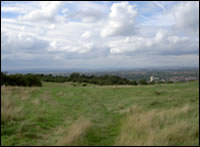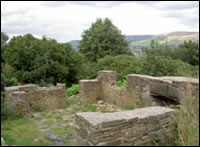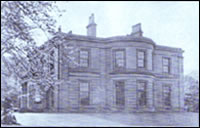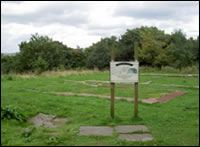Friends of Gorse Hall
Using The Past To Promote The Future


Gorse Hall is situated on a hill overlooking Stalybridge and bordering Dukinfield. Covering approximately 35 acres of woodland and meadow, with panoramic views over to the Cheshire Plains and the Pennines.
The site was once a part of the Dockenfeld Manor held by Lieutenant-Colonel Robert Duckenfield, well known in the Civic War. The Manor was never sold but passed on through generations. "Old Gorse Hall" can be traced back to the 17th century although it probably goes back much before this. Remains of the "Old Gorse Hall" can still be seen.
On the death of Lady Dukinfield-Daniel the estate passed on to her husband John Astley, a famous portrait painter of that era. Francis Dukinfield Astley, a great sportsman built Hunters Tower on Gorse Hall in 1807, and was involved in the formation of the Astley Riflemen Volunteers, the rifle range wall can still be seen today near to the Tower.

The Towns of Stalybridge and Dukinfield were typical cotton mill towns in the 18th and 19th century. John Leech one of the many wealthy cotton manufacturers of the district, bought land from Mr. Astley to build his mills. His son John bought the Gorse Hall estate and with stone from the local quarries built a "New" Gorse Hall mansion in 1835/6. He laid out formal gardens, an orchard and a bowling green , now used as an open classroom.
John and Jane Leech had eight children, one being Helen who was later to become the mother of Beatrix Potter.
After Jane's death, William Storrs bought the mansion and gave it to his son George Harry and his wife as a wedding present. On the night of 1st November 1909 George Harry was brutally murdered by an intruder at the Hall, he was stabbed 15 times.
Two people were tried and acquitted, his widow had the house taken down in 1910 and moved away never to return. Through a Heritage Lottery Grant the site of this tragedy was opened up and the remaining foundation walls consolidated with support from the UMAU and the Friends of Gorse Hall volunteers.

On the 12th November 1909 George Harry's coachman was found hanged in the stables of the hall, perhaps he felt guilty for not being there when his master was murdered, the mystery still remains. This tragic story was included in a BBC television drama series (Autumn 2005).
The site is now managed by the Friends of Gorse Hall, who have a lease on the land, which is owned by TMBC. The aim of the "Friends" is to promote the site for leisure, educational and historical use.
Friends Of Gorse Hall
The Friends have regular days for volunteers on Tuesdays and sometimes at weekends, to work on conservation projects.

The volunteers also undertake wildlife surveys of the animals and plants found at Gorse Hall.
We hold several walks each year, and go out to other groups to promote our work by giving presentations and showing exhibitions.
Archaeology projects are undertaken around the ruins of the hall, with involvement from the local schools in Tameside.
There is also a permanent Orienteering Course and permission for a Trim Trail soon to be created on site.
For more information and a map of Gorse Hall, please download the map of Gorse Hall leaflet  .
.
For more information visit the Friends of Gorse Hall Website  .
.

